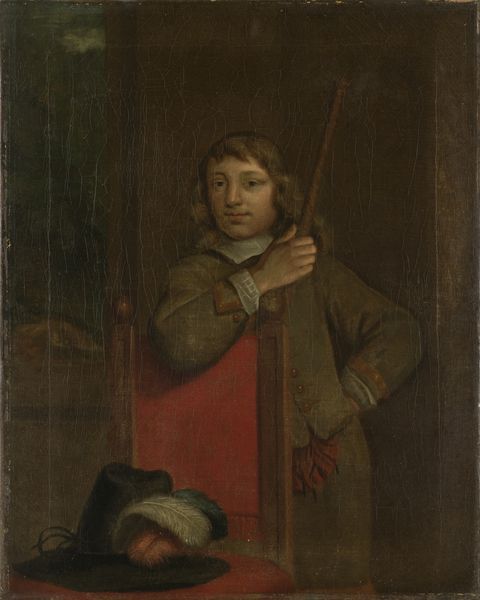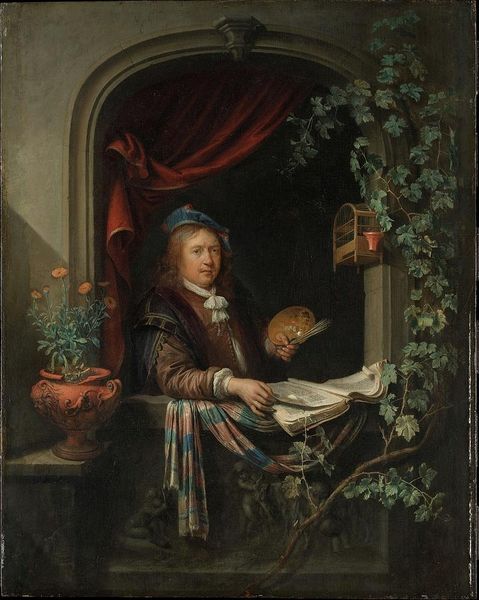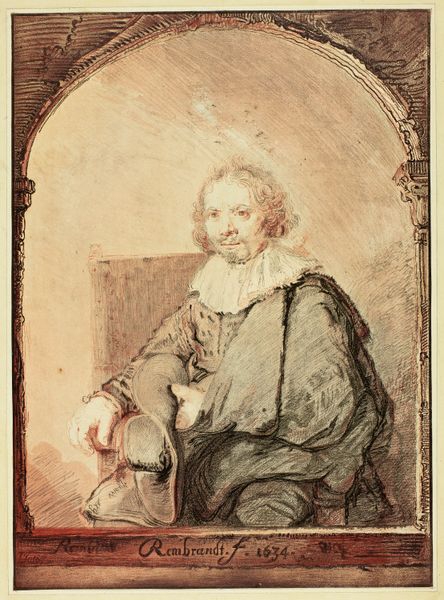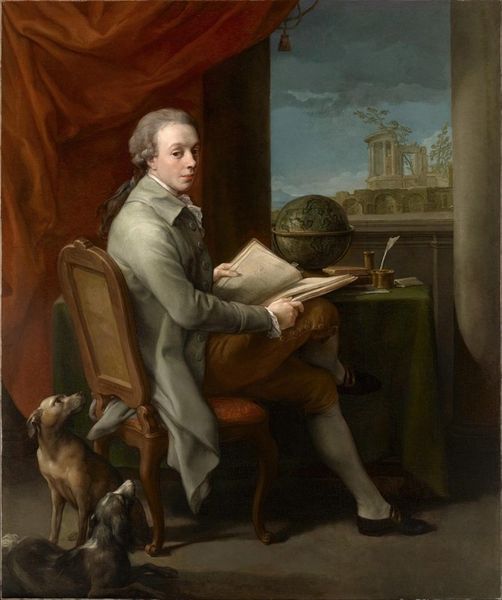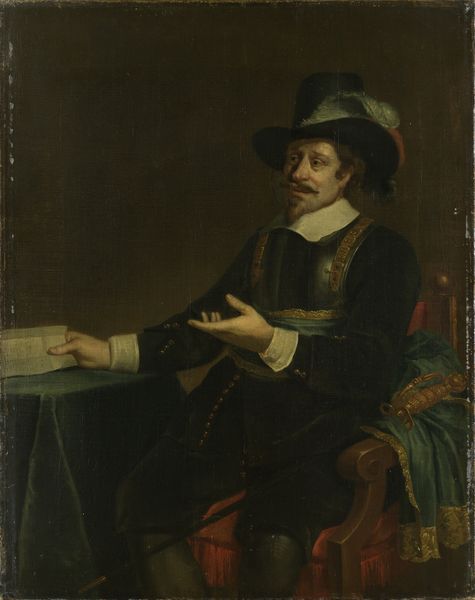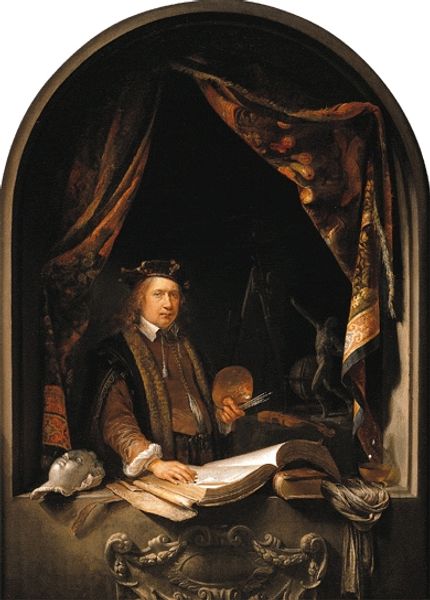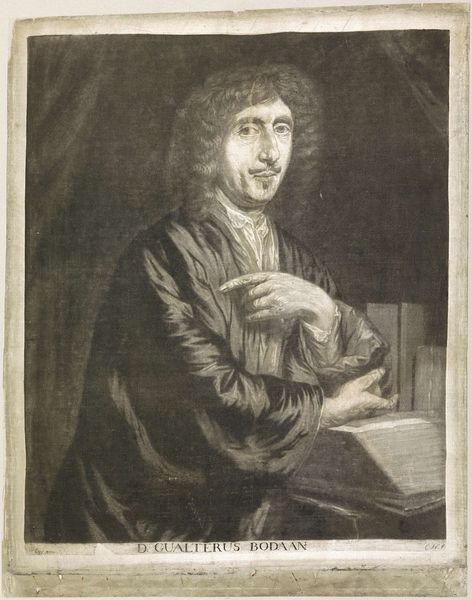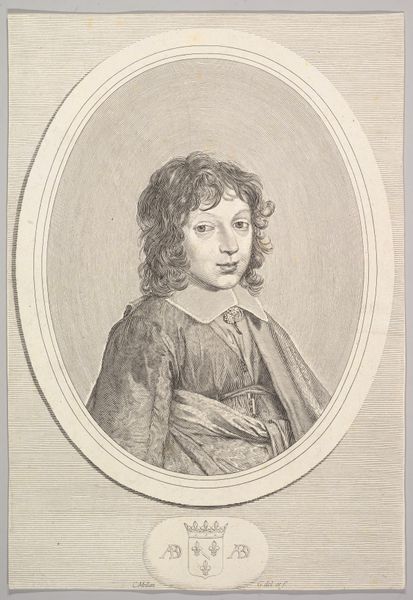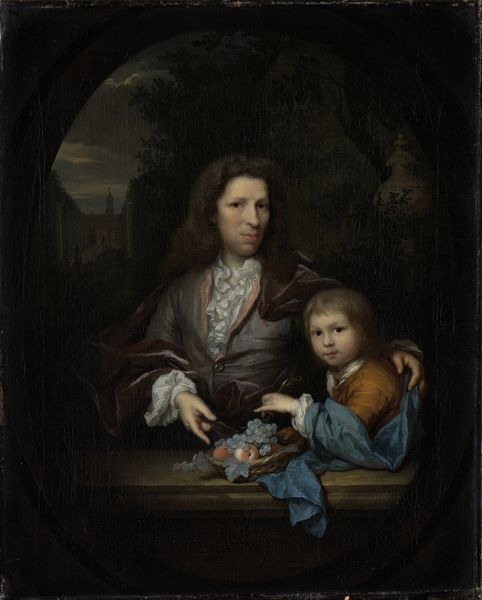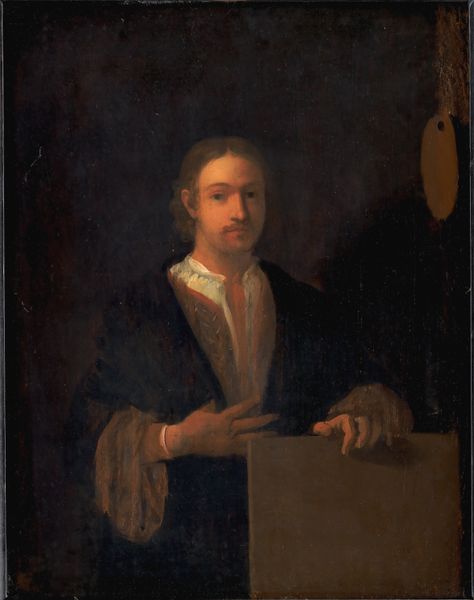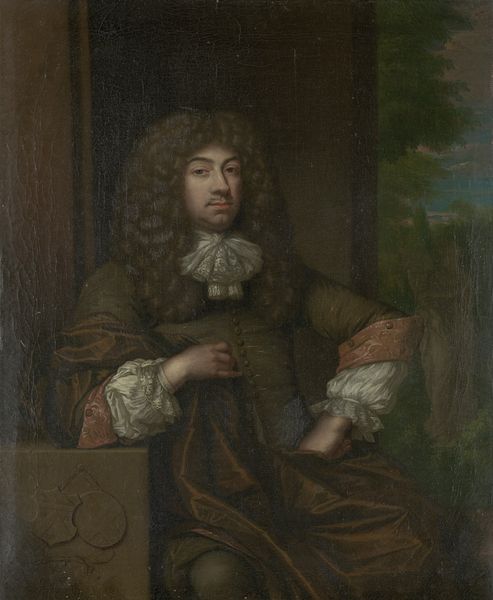![['Self-Portrait', 'Portrait of a Painter'] by Pieter van Egmondt](/_next/image?url=https%3A%2F%2Fd2w8kbdekdi1gv.cloudfront.net%2FeyJidWNrZXQiOiAiYXJ0ZXJhLWltYWdlcy1idWNrZXQiLCAia2V5IjogImFydHdvcmtzL2I5MmU5MGQ4LTFhNGQtNGU0Zi1iY2VmLTljMjIzYTcwOWMzYS9iOTJlOTBkOC0xYTRkLTRlNGYtYmNlZi05YzIyM2E3MDljM2FfZnVsbC5qcGciLCAiZWRpdHMiOiB7InJlc2l6ZSI6IHsid2lkdGgiOiAxOTIwLCAiaGVpZ2h0IjogMTkyMCwgImZpdCI6ICJpbnNpZGUifX19&w=3840&q=75)
painting, oil-paint
#
portrait
#
self-portrait
#
baroque
#
dutch-golden-age
#
painting
#
oil-paint
#
intimism
#
underpainting
#
history-painting
#
realism
Dimensions: support height 29.6 cm, support width 25.5 cm, outer size depth 6.5 cm
Copyright: Rijks Museum: Open Domain
Editor: So, we’re looking at Pieter van Egmondt's self-portrait, dating back to around 1655. He used oil paints, and there's such a quiet mood to it. He seems almost… contemplative. What captures your attention in this piece? Curator: It’s like stumbling upon a hidden world, isn't it? That shadowed space he occupies, tucked behind the stone window, feels like peeking into the artist’s private thoughts. You notice how he’s holding that small engraving? It is as if the artwork mirrors our own gaze, a hall of reflective artistry, creating that deep sense of intimacy, a peek inside a Dutch artist's interior life during the Golden Age, with a melancholic touch. I wonder what tale his eyes try to tell? Editor: That's lovely – a hall of mirrors reflecting artistry. What do you mean? Curator: Well, he’s an artist painting himself *holding* a smaller artwork, see? It is about the layers of creation and how artists perceive themselves through the art that inspires them or even the art they *produce.* Like, is he challenging our expectations of self-portraits, placing himself within a broader context of artistry and skill? The engraving becomes an emblem, hinting at skill and knowledge, as integral to identity, don’t you think? Editor: That's a really interesting idea. It makes me see the whole painting differently now – much more layered and less straightforward. Curator: Art thrives in shared perception! The magic in such discoveries creates this vibrant, never-ending dance that breathes through art, and through us.
Comments
No comments
Be the first to comment and join the conversation on the ultimate creative platform.
